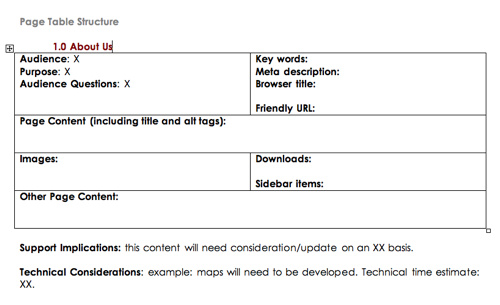When I landed my first ad agency job, all I wanted to do was write. I imagined myself at a desk, crafting headlines and taglines and brochure copy, working closely with designers, playing with words on a daily basis.
But I never imagined the problems I’d run into: clients with no assets, processes that fell apart under pressure, a mismatch of expectations between client and agency, and, even more often, content that had no one to care for it once it was published on a website.
That’s how I got into content strategy. On accident, like so many other strategists, I found myself trying to find solutions to these common problems and stumbling into a community that was doing the same thing.
But even as I honed my own skills and convinced my ad agency to sell content strategy, we were nevertheless challenged by small budgets or clients who weren’t convinced strategy was necessary. That’s when I had to get creative—because we faced very real content problems and we couldn’t keep doing things the same way, even if the clients thought we could.
So I developed a few ways to sneak in bits of content strategy.
Start with a strategic questionnaire.
If you already have one on hand, a questionnaire won’t cost you much in terms of time, but it will be invaluable in directing your content project. Even if you can’t do a full discovery process—working with the client to hone their key messages, tone, audiences, and style guidelines—asking some simple questions will help give you direction when there is none.
The answers will serve as a reference point further down the line, providing you with evidence of what was agreed upon if and when team members or higher-ups begin to disagree later on. The answers may also help if you need to ask for more budget or time for an extra round of revisions.
Opinions differ on what to include in your questionnaire, but here are a few core questions:
- Who is your most important audience? Your second most important? Rank all audiences in order of importance.
- What is the main message you’re trying to get across? If your readers only walk away understanding one thing about your company, what do you want that to be?
- Who is your competition? Do you like or dislike their website, Twitter feed, brochures, etc.?
- Fill in the blank: This project will be successful if __________.
Have page tables on hand and share them readily.
Page tables (of which you can find a fantastic example in Content Strategy for the Web) are documents that allow you or your client to make strategic decisions about each page of the website before it’s written and posted, or sometimes even during the process. They can contain strategic considerations, like audience and goals per page. They can house SEO, letting you or the client define key phrases, meta, browser titles, etc. Or they can serve as an outline of the key messages and structure of your pages.
When you don’t have budget for a full strategy project, give your clients a standard page-table format and ask them to provide some of the strategic elements therein.
Here’s an example of a very simplified page table that I’ve been giving out to my nonprofit clients:
Take some time to develop and customize these basic tools for sneaking some strategy into your content marketing operation. And stay tuned tomorrow, when we’ll bring you two more.



